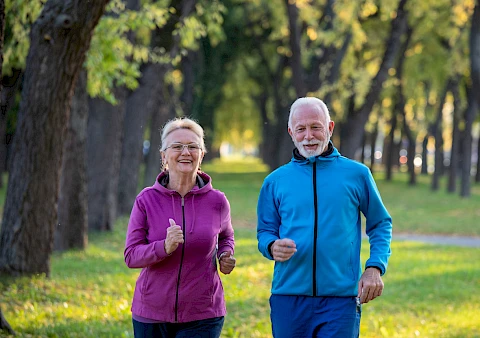
September is Healthy Aging Month, dedicated to raising awareness about the importance of staying healthy and active as we age. An active lifestyle is critical for seniors' overall well-being, mobility, and independence, but it's necessary to balance activity with healthy limits to prevent overexertion or injury. Let's explore how physical limits change as we age and how caregivers can support seniors in staying active while respecting these changes.
Recognizing Physical Changes in Seniors
As we age, our bodies go through various changes that can affect physical abilities. Muscle mass tends to decrease, leading to a decline in strength and endurance. Joint flexibility can also diminish, making certain movements more challenging. Balance and coordination may also be reduced, increasing the risk of falls. These changes mean that activities once easily performed may now require more effort and caution. Everyone ages differently. Some seniors may experience significant physical changes, while others remain relatively fit. Recognizing these individual differences is key to tailoring physical activities that are both safe and beneficial.
Identifying Healthy Limits
One of the first steps in supporting seniors in staying active is identifying their healthy physical limits. Caregivers should watch for signs that a senior might be overdoing it, such as shortness of breath, dizziness, or excessive fatigue during or after activities. These signals can indicate that an activity is too strenuous. Consulting with healthcare professionals can provide valuable insights into a senior's physical capabilities. Medical consultations can help determine safe activity levels and guide the creation of realistic and personalized goals. These goals should strike a balance between challenge and safety, encouraging progress without risking health.
Encouraging Safe and Enjoyable Activities
Finding the right activities for seniors can make a significant difference in maintaining motivation and enjoyment. Low-impact exercises like walking, swimming, or tai chi can be excellent options for seniors with limited mobility. These activities help improve strength, flexibility, and balance without putting too much strain on the body. Introducing new hobbies or exercises can keep things interesting. Consider activities like gardening, yoga, or even dancing. The key is to choose activities that match the individual's interests and abilities. A mix of activities can keep seniors engaged and prevent routines from becoming monotonous. Always consult with their healthcare provider before your loved one begins any new physical activity.
Supporting Seniors in Staying Active
Caregivers play a major role in motivating and supporting seniors' fitness efforts. Encouragement and positive reinforcement can boost confidence and foster a sense of accomplishment. Setting small, achievable goals and celebrating milestones can make a big difference in maintaining motivation. Creating a safe environment for exercise is also essential. Ensure that spaces where activities take place are free of hazards, like loose rugs or clutter that could cause falls. Providing the right equipment or attire for activities, such as sturdy shoes or supportive seating, can also enhance safety.
Need Help Staying Active?
Understanding and respecting seniors' changing physical limits is vital in promoting healthy aging. Encouraging an active lifestyle, tailored to individual abilities and interests, supports overall well-being and longevity. Caregivers should strive to motivate and guide seniors in maintaining a balanced approach to physical activity. Does your loved one need assistance with their physician-approved activities?
For personalized in-home care and support in Cedar Cottage, Killarney, Kitsilano, Marpole, Mount Pleasant, or any of the surrounding neighbourhoods, contact us at Senior Helpers Vancouver. Our team is dedicated to helping seniors live healthy, happy lives through active engagement and compassionate care.